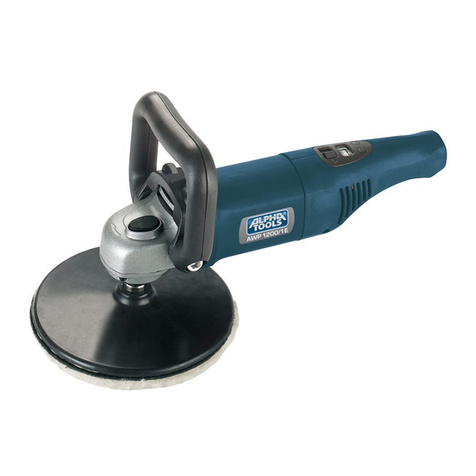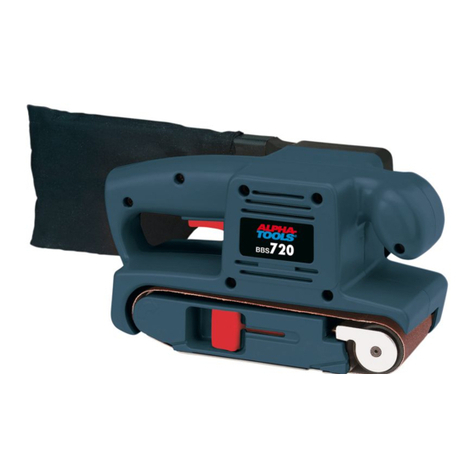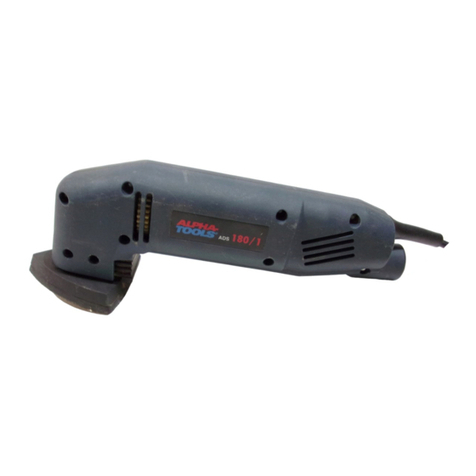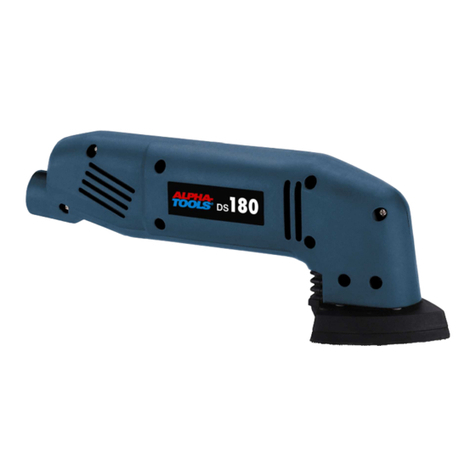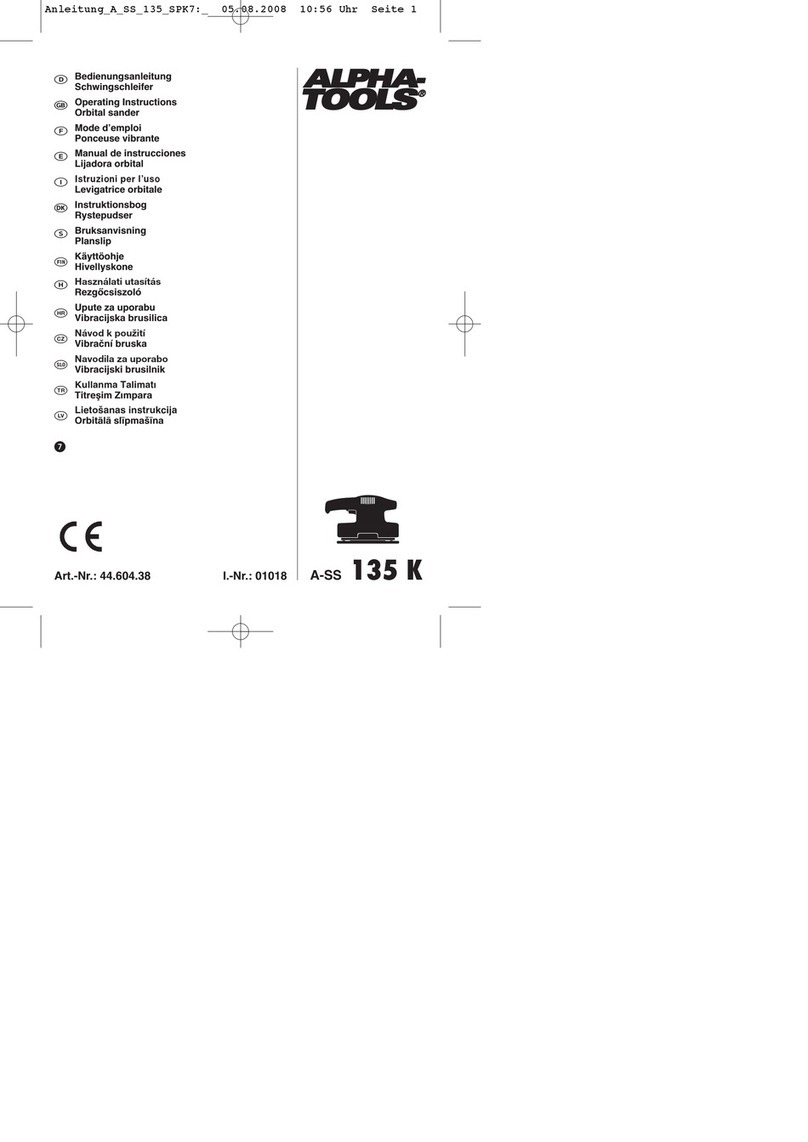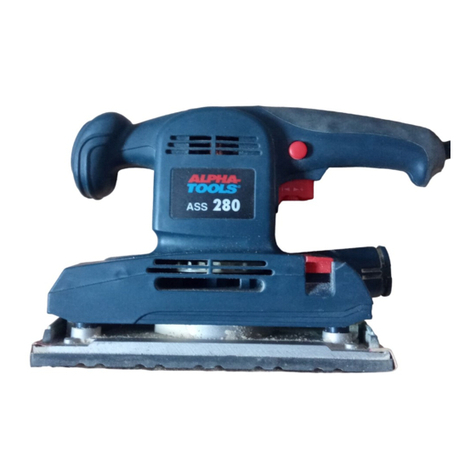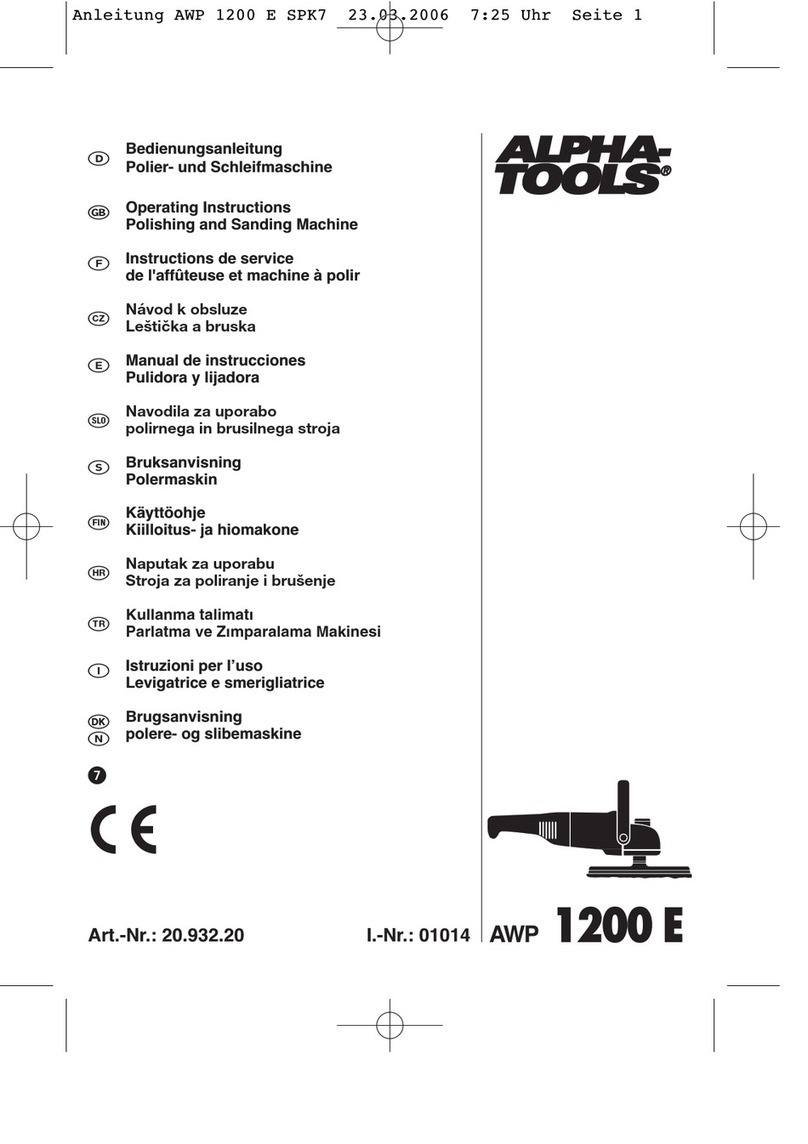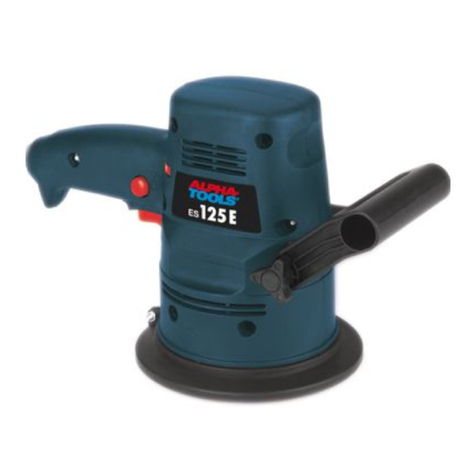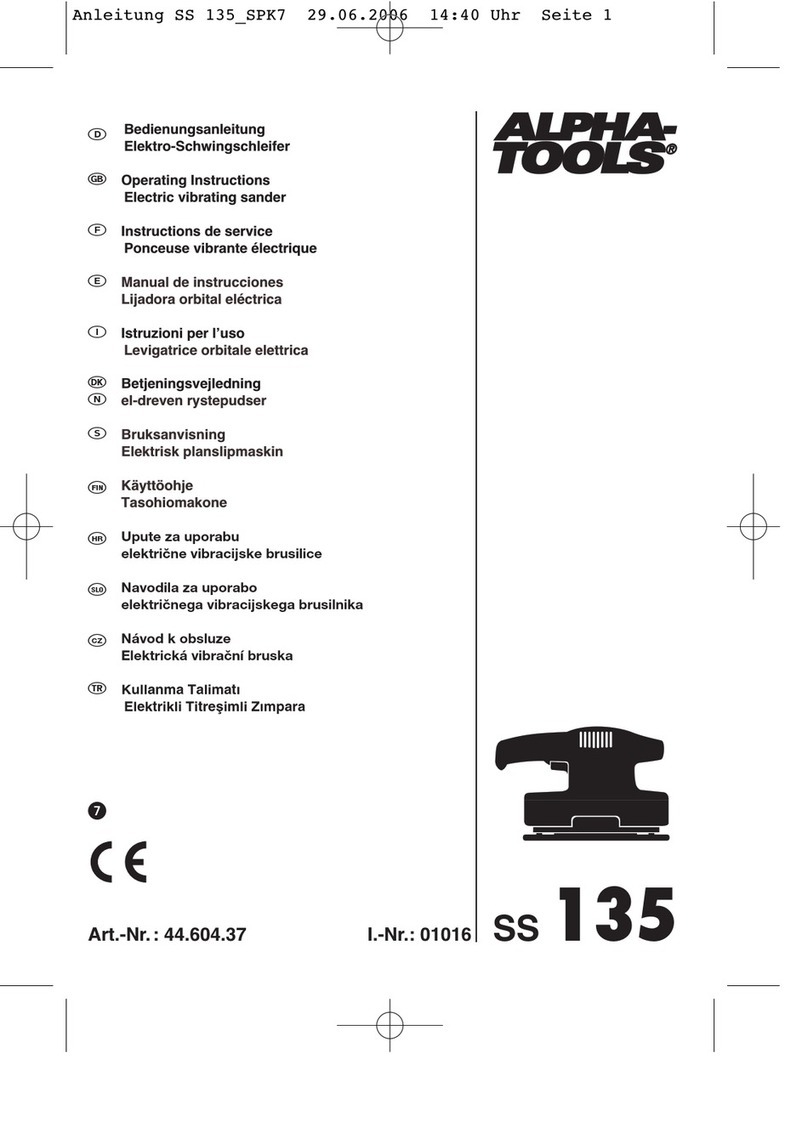Achtung! Üben Sie keinen Druck auf die
Poliermaschine aus!
Pflege-Tipps
Für optimalen Lackschutz sollten Sie Ihren
Wagen 2- bis 3- mal im Jahr Polieren.
Waschen Sie Ihren Wagen mindestens alle 2
Wochen. Vermeiden Sie die Benutzung von
Haushaltswaschmitteln, da diese den Lack
beschädigen können und die Wachsschicht
ablösen.
Waschen Sie Ihren Wagen mit einem sauberen
Schwamm. Arbeiten sie von oben nach unten.
Insekten, Vogelkot und Teerflecken sollten täglich
von der Lackoberfläche entfernt werden.
Damit das Glasreinigungsmittel nicht die
Lackfläche benetzt, sollte es auf das Waschtuch
gesprüht werden, nicht direkt auf die
Fensterfläche.
6.2 Verwendung als Schleifmaschine
Zum Schleifen verwenden Sie die mitgelieferten
Schleifaufsätze (Abb. 9).
Problemloses Wechseln der Schleifaufsätze durch
Klettverschluss.
Schleifteller mit der ganzen Fläche aufsetzen.
Maschine einschalten und mit mäßigem Druck
über das Werkstück kreisende oder Quer- und
Längsbewegungen ausführen.
Zum Grobschliff wird eine grobe, für Feinschliff
eine feinere Körnung empfohlen. Durch
Schleifversuche kann die günstigste
Körnung ermittelt werden.
6.3 Drehzahlregelung (Abb.2)
Mit der Drehzahlregulierung können Sie die
gewünschte Arbeitsdrehzahl einstellen.
Durch drücken der Taste „+“ erhöht sich die
Drehzahl.
Durch drücken der Taste „-” verringert sich die
Drehzahl.
Die eingestellte Drehzahl können Sie dem Display (8)
entnehmen.
Eingestellte Drehzahl = Anzeige x 100
7. Austausch der Netzanschlussleitung
Wenn die Netzanschlussleitung dieses Gerätes
beschädigt wird, muss sie durch den Hersteller oder
seinen Kundendienst oder eine ähnlich qualifizierte
Person ersetzt werden, um Gefährdungen zu
vermeiden.
8. Reinigung, Wartung und Ersatzteil-
bestellung
Ziehen Sie vor allen Reinigungsarbeiten den
Netzstecker.
8.1 Reinigung
Halten Sie Schutzvorrichtungen, Luftschlitze und
Motorengehäuse so staub- und schmutzfrei wie
möglich. Reiben Sie das Gerät mit einem
sauberen Tuch ab oder blasen Sie es mit
Druckluft bei niedrigem Druck aus.
Wir empfehlen, dass Sie das Gerät direkt nach
jeder Benutzung reinigen.
Reinigen Sie das Gerät regelmäßig mit einem
feuchten Tuch und etwas Schmierseife.
Verwenden Sie keine Reinigungs- oder
Lösungsmittel; diese könnten die Kunststoffteile
des Gerätes angreifen. Achten Sie darauf, dass
kein Wasser in das Geräteinnere gelangen kann.
Die Polieraufsätze nur mit der Hand waschen und
Lufttrocknen lassen. Verwenden Sie dafür nur
milde Seife und einen feuchten Lappen.
8.2 Kohlebürsten
Bei übermäßiger Funkenbildung lassen Sie die
Kohlebürsten durch eine Elektrofachkraft überprüfen.
Achtung! Die Kohlebürsten dürfen nur von einer
Elektrofachkraft ausgewechselt werden.
8.3 Wartung
Im Geräteinneren befinden sich keine weiteren zu
wartenden Teile.
8.4 Ersatzteilbestellung:
Bei der Ersatzteilbestellung sollten folgende Angaben
gemacht werden:
Typ des Gerätes
Artikelnummer des Gerätes
Ident-Nummer des Gerätes
Ersatzteilnummer des erforderlichen Ersatzteils
Aktuelle Preise und Infos finden Sie unter
www.isc-gmbh.info
9. Entsorgung und Wiederverwertung
Das Gerät befindet sich in einer Verpackung um
Transportschäden zu verhindern. Diese Verpackung
ist Rohstoff und ist somit wieder verwendbar oder
kann dem Rohstoffkreislauf zurückgeführt werden.
Das Gerät und dessen Zubehör bestehen aus
verschiedenen Materialien, wie z.B. Metall und
Kunststoffe. Führen Sie defekte Bauteile der
Sondermüllentsorgung zu. Fragen Sie im
Fachgeschäft oder in der Gemeindeverwaltung nach!
D
7
